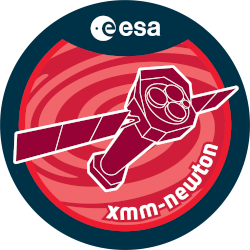

| Proposal ID | 020323 |
| Title | THE X-RAY SPECTRA OF ULTRALUMINOUS INFRARED GALAXIES (ULIGS) |
| Download Data Associated to the proposal | https://nxsa.esac.esa.int/nxsa-sl/servlet/data-action-aio?obsno=0203230401 |
| DOI | https://doi.org/10.5270/esa-tun5srk |
| Principal Investigator, PI | Prof ANDREW WILSON |
| Abstract | Ultraluminous Infrared Galaxies are fundamentally r^ant to a wide range ofastronomical issues. However, the power source for the huge infrared luminosityis uncertain: it could be a starburst or an active galactic nucleus and weargue that X-ray observations provide the best method of resolving this issue.We have been awarded Chandra time (AO4) to image a sample of 14 ULIGs, carefullychosen to sample fully the range of galaxy properties, rather than the brightestor best known examples. With XMM we will obtain spectra of the 9 galaxies in ourChandra-observed sample which have not been observed by XMM, and then make acomprehensive study of the X-ray properties of the full sample, using both XMMand Chandra observations. |
| Publications |
|
| Instrument | EMOS1, EMOS2, EPN, OM, RGS1, RGS2 |
| Temporal Coverage | 2005-01-23T17:49:33Z/2005-02-18T19:38:04Z |
| Version | 17.56_20190403_1200 |
| Mission Description | The European Space Agencys (ESA) X-ray Multi-Mirror Mission (XMM-Newton) was launched by an Ariane 504 on December 10th 1999. XMM-Newton is ESAs second cornerstone of the Horizon 2000 Science Programme. It carries 3 high throughput X-ray telescopes with an unprecedented effective area, and an optical monitor, the first flown on a X-ray observatory. The large collecting area and ability to make long uninterrupted exposures provide highly sensitive observations. Since Earths atmosphere blocks out all X-rays, only a telescope in space can detect and study celestial X-ray sources. The XMM-Newton mission is helping scientists to solve a number of cosmic mysteries, ranging from the enigmatic black holes to the origins of the Universe itself. Observing time on XMM-Newton is being made available to the scientific community, applying for observational periods on a competitive basis. |
| Creator Contact | https://www.cosmos.esa.int/web/xmm-newton/xmm-newton-helpdesk |
| Date Published | 2006-03-10T00:00:00Z |
| Last Update | 2025-08-04 |
| Keywords | "XMM", "wide range", "xray spectra", "ultraluminous infrared galaxy", "huge infrared luminosity", "power source", "galaxy properties", "astronomical issues", "active galactic nucleus", "xray properties", "chandra time ao4", "fundamentally relevant", "`` starburst ''" |
| Publisher And Registrant | European Space Agency |
| Credit Guidelines | European Space Agency, Prof ANDREW WILSON, 2006, 'THE X-RAY SPECTRA OF ULTRALUMINOUS INFRARED GALAXIES (ULIGS)', 17.56_20190403_1200, European Space Agency, https://doi.org/10.5270/esa-tun5srk |